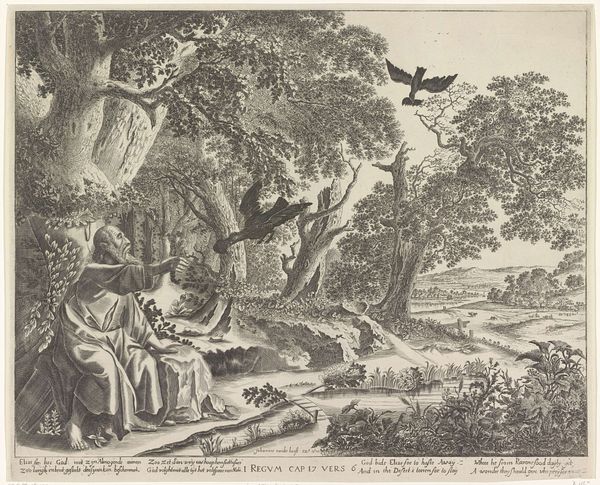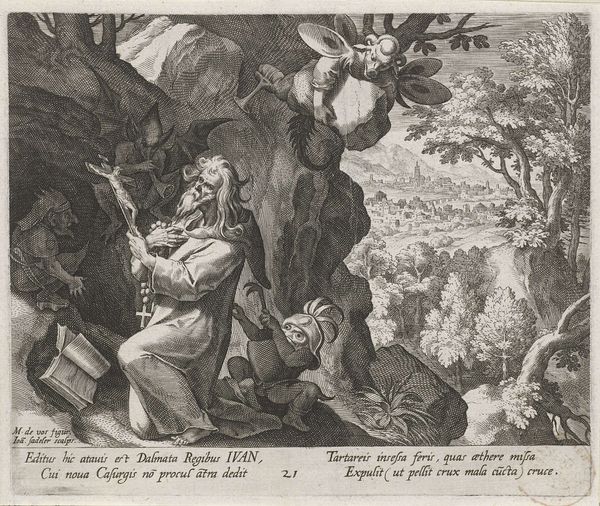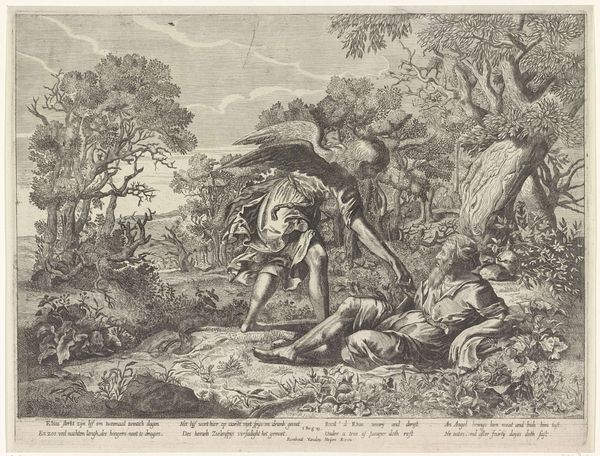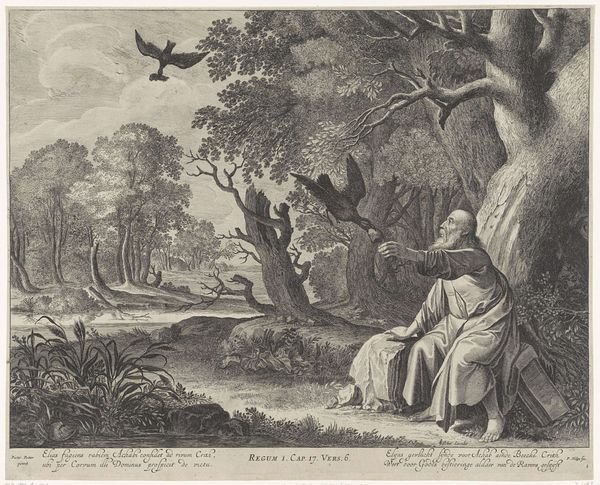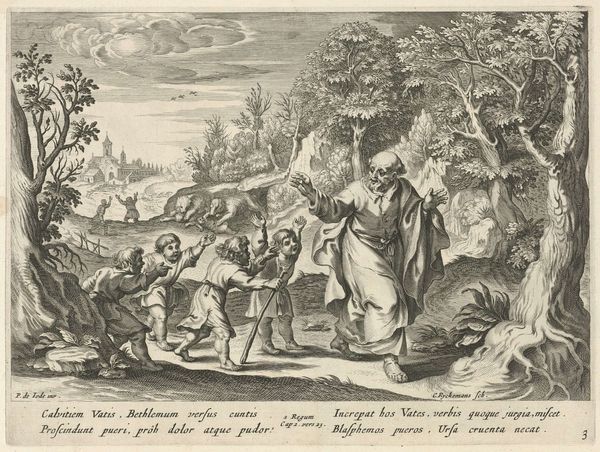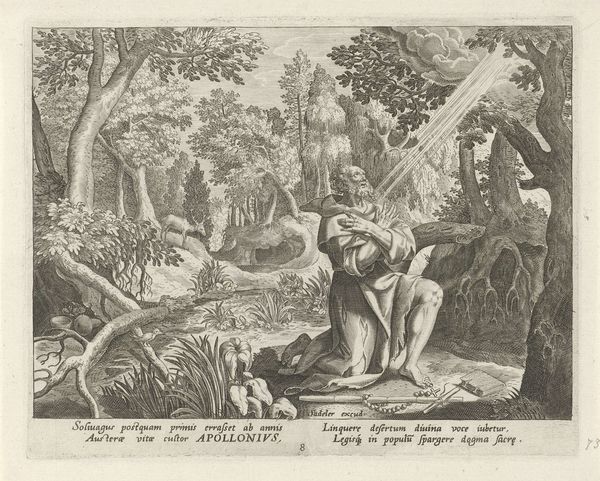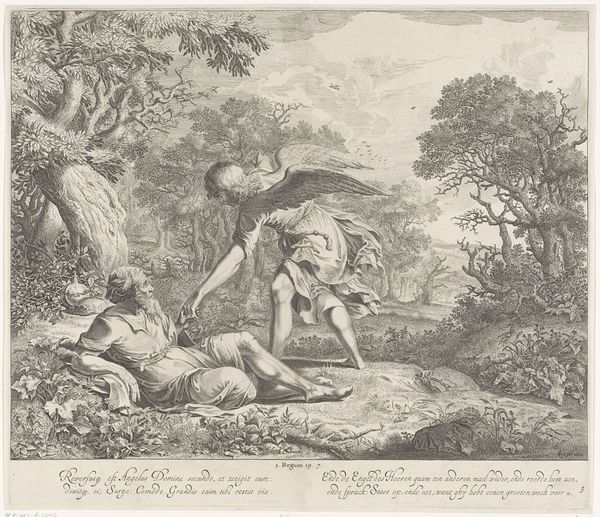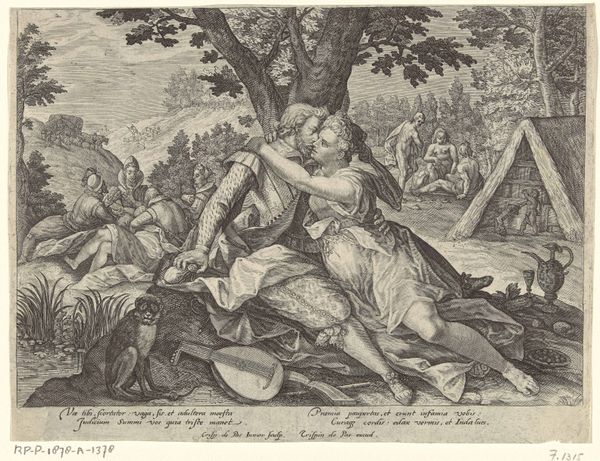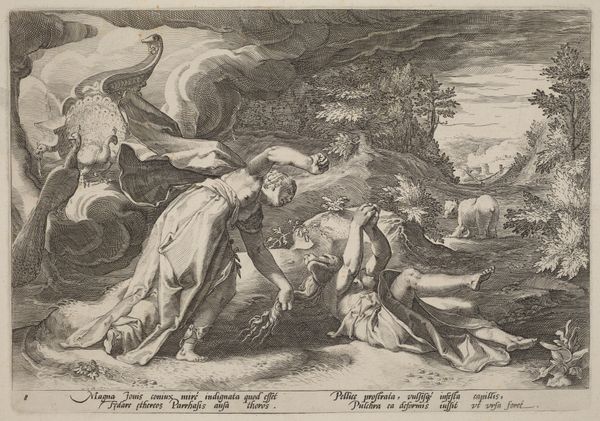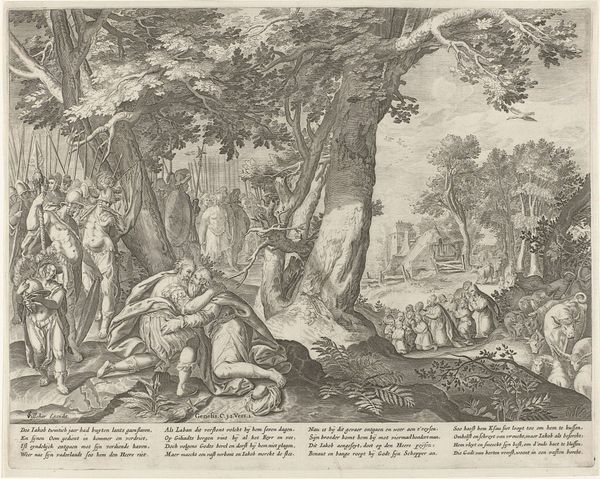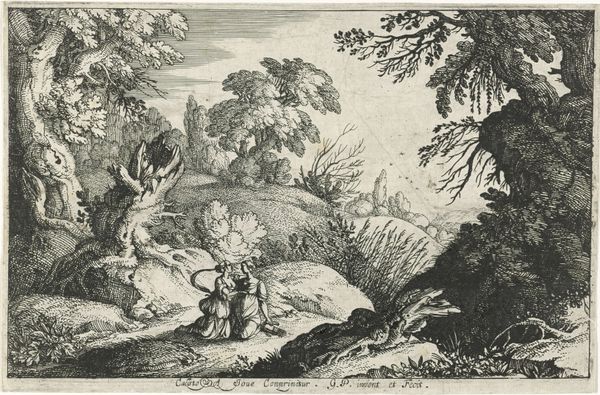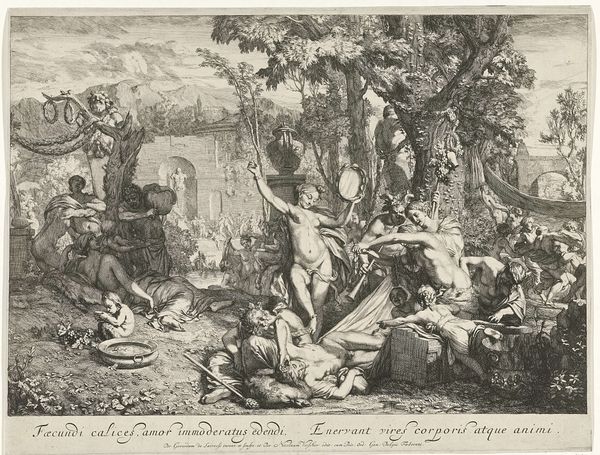
print, engraving
#
narrative-art
#
baroque
# print
#
landscape
#
figuration
#
engraving
Dimensions: height 270 mm, width 362 mm
Copyright: Rijks Museum: Open Domain
Curator: This is "The Angel Appearing to Hagar and Ishmael in the Desert." The Rijksmuseum attributes this engraving to an anonymous artist, dating it to somewhere between 1644 and 1716. The materials employed are traditional for the period: ink on paper. It’s interesting to note the prominent inclusion of text in this composition, as printmaking allowed for the wider distribution of biblical narratives alongside theological commentary. Editor: What a melancholic scene. I'm immediately drawn to the stark contrast between the divine serenity of the angel and the utter dejection in Hagar’s posture. Ishmael looks absolutely parched and miserable in the background. Curator: Indeed. The narrative centers on Hagar, cast out into the desert with her son, Ishmael. Dying of thirst, they are miraculously saved by an angel who reveals a well. What makes this visually arresting, to me, is how landscape becomes an active participant. Notice how the trees seem to both frame and press in upon Hagar, mirroring her sense of entrapment and vulnerability. Also note the text, with its reflections of theology from the period. Editor: Absolutely. The almost theatrical quality of the angel's pose feels so…Baroque. And there's a sort of divine stage lighting happening; the angel emanates light that bathes her figure, making her almost appear out of the scene. I think it almost underscores how Hagar's plight will change immediately—it really adds emotional texture. You feel relief is actually coming. Curator: Right. One reading sees Hagar as a stand-in for the Synagogue—the mother of Ishmael—wandering in the desert while awaiting her own messiah. It is fascinating to examine such artworks for insights into how the social tensions of the 17th century were expressed. For example, notice how the architecture on the distant mountain mirrors a synagogue. This isn't simply biblical illustration; it's visual theology being distributed to a wide audience. Editor: It is a reminder that what might read like purely historical depictions carry the weight of ongoing anxieties and lived social relations, right? For me, the desert becomes less about geography and more about psychic space, which is the desolation of hopelessness. A stark piece, visually and conceptually. Curator: An exploration of craft and communication that shows much more when we start investigating its processes. Editor: Indeed, this print offers plenty to consider as an encapsulation of baroque vision.
Comments
No comments
Be the first to comment and join the conversation on the ultimate creative platform.
